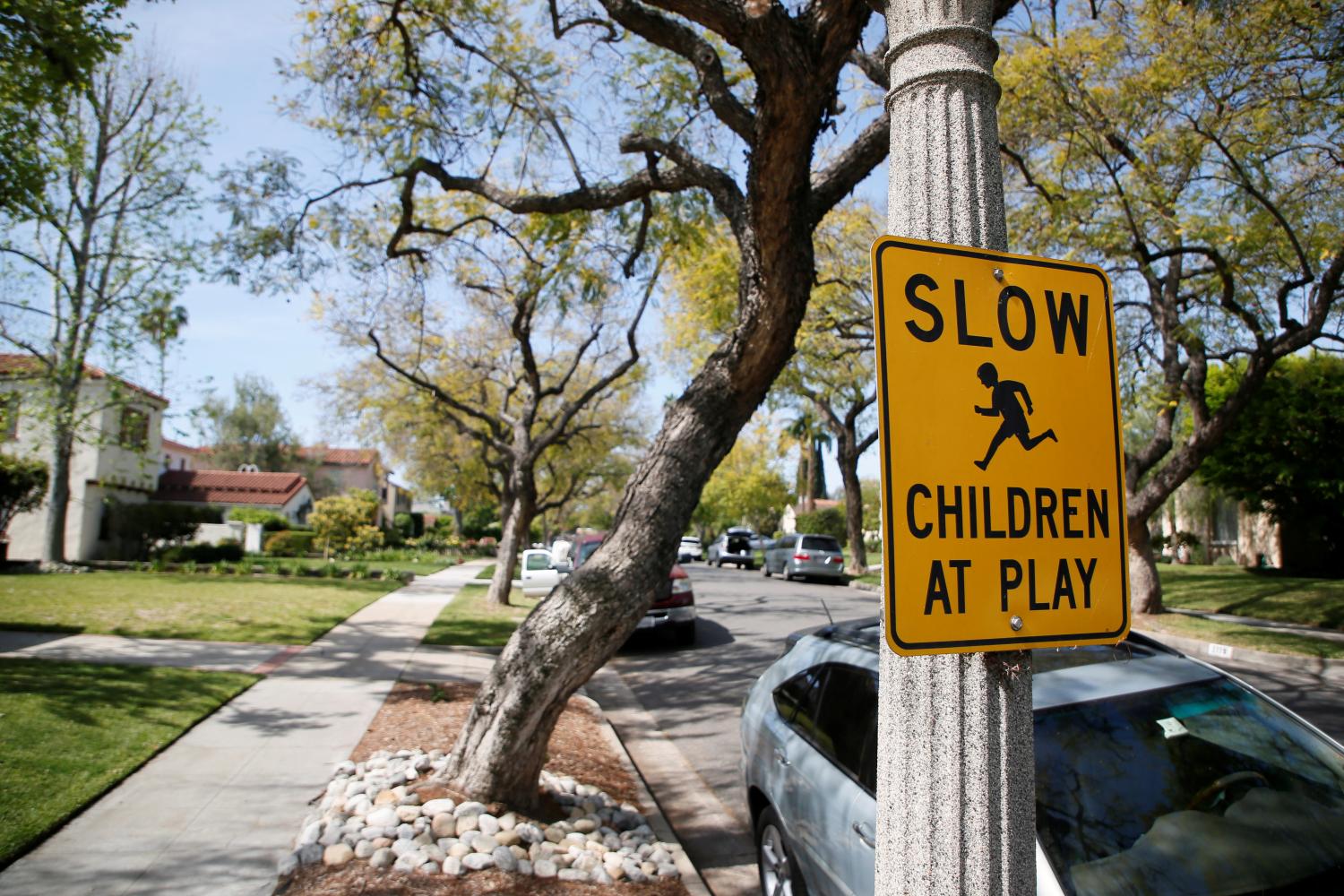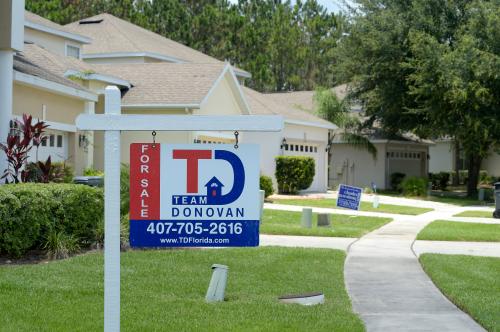I. Introduction
How much does place – that is, the neighborhood in which a family lives – affect one’s earnings, likelihood of being incarcerated, and other key life outcomes? To answer this question, in 1994 the U.S. Department of Housing and Urban Development (HUD) launched the Moving to Opportunity (MTO) demonstration. MTO enrolled several thousand families living in some of the most economically distressed public housing projects in the nation, and then via random lottery offered some the chance to use a housing voucher to relocate to a lower-poverty area. MTO thus provided what is arguably the first clear chance to credibly and convincingly isolate the effects of neighborhood per se on the lives of low-income families.
While previous studies had generally found that living in less distressed neighborhoods improved most family outcomes, the results from MTO suggested fewer benefits. Health (both mental and physical) improved for those who were adults at the time of enrolling in MTO as well as for the girls in these households. There were no improvements in economic outcomes for adults. And relocating to a lower-poverty area did help children achieve higher earnings when they became adults, but only for those who were relatively young at the time they moved.
Why did the MTO results differ so substantially from previous research? A number of hypotheses have been offered, such as the unusually high levels of disadvantage of MTO families, or the fact that families offered vouchers through the program moved to neighborhoods that had lower poverty rates but were not much more racially integrated the neighborhoods of those not offered vouchers. But as we explain below, we think the most likely explanation is that previous studies conflated the effects of neighborhood environments with those of hard-to-measure family background features that are associated with where families wind up living and with the outcomes we are trying to study. So we are inclined to put more weight that others on the results from MTO.
We also discuss the implications of MTO findings for public policy, under four main headings:
- Reforms to housing programs to ensure that they are targeted to those who stand to gain the most, particularly – in light of the MTO findings – households with young children
- Policies to improve a family’s chances of leasing in low-poverty neighborhoods
- Alternatives to housing mobility programs to improve the economic prospects of low-income adults
- Direct improvements in the quality of life in poor communities.
II. The Moving to Opportunity demonstration
HUD’s MTO demonstration was designed to show the effects of neighborhood conditions on people’s life outcomes. From 1994 to 1998, MTO enrolled 4,604 low-income public housing families living in high-poverty neighborhoods within five U.S. cities: Baltimore, Boston, Chicago, Los Angeles, and New York. Families were randomly assigned into one of three groups:
- The low poverty voucher group, which received housing vouchers that could only be used in census tracts (local areas with about 4,000 people in them) with 1990 poverty rates below 10 percent;
- The traditional voucher group, which received regular Section 8 housing vouchers without any MTO relocation constraint; and
- A control group to remain in public housing, and receive no additional assistance through MTO.
MTO families were initially living in some of the most distressed (and notorious) public housing projects in the nation, including the Robert Taylor Homes in Chicago and Lafayette Courts in Baltimore. MTO was successful in moving some of these families into lower-poverty areas. Over time the contrast between the neighborhood conditions of the low-poverty voucher and control groups attenuated, partly because the control group itself was moving into somewhat lower-poverty areas either on their own or from policy changes in the background (such as the demolitions of public housing projects under HUD’s HOPE VI program). Nevertheless, moving with a low poverty voucher lowered exposure to poverty at census tract level by an average of 18 percentage points in the 10-15 years following assignment.
Initial studies of how MTO affected youth and children showed no gains in schooling outcomes, which seemed to contradict previous non-experimental studies of neighborhood effects (Sanbonmatsu et al. 2006, Sanbonmatsu et al. 2011). But longer-term follow-up data showed that MTO participants who were young children at baseline (below 13 years of age) experienced substantially and statistically significantly higher adult earnings and household incomes as a result of MTO moves, as well as some evidence of increased college going (Chetty, Hendren and Katz 2016).
For MTO adults, by contrast, there was little evidence of any gains in economic outcomes—employment, earnings, social-program participation, participation in job training or educational activities, etc.—in contrast to what had been found in many observational studies. This lack of detectable neighborhood effect on the earnings or employment of those who moved as adults has been consistently documented in both the interim and long-term follow-ups of MTO (Orr et al. 2003, Sanbonmatsu et al. 2011, Ludwig et al. 2012) using both survey and administrative data measures of economic outcomes. The same finding held in the longer-term follow-up of MTO participants (Chetty, Hendren and Katz, 2016). MTO did deliver improvements in important health outcomes for adults such as depression, obesity and diabetes (Sanbonmatsu et al. 2011, Ludwig et al. 2011).
But the discrepancy in findings for earnings and employment has heretofore remained a mystery, and a particularly important one given the special emphasis given to earnings in both social science and policy discussions, including the legislation that authorized the MTO demonstration.
III. Reconciling MTO with previous studies
In order to try to reconcile MTO’s findings showing no signs of neighborhood effects on adult earnings with the previous research literature, Harding et al. (2019) subjected data from the MTO control group to the same sort of “non-experimental” analysis that most neighborhood-effects studies use. They show that such analysis yields results that are remarkably similar to those typical of nonexperimental studies. This helps rule out several of the most obvious hypotheses for why MTO findings differ from previous studies, such as differences in the way outcomes are measured, or the possibility that MTO families were just fundamentally different from other families in ways that affect how they respond to new neighborhood opportunities. Harding et al. (2019) similarly rule out explanations that emphasize the possibility that MTO did not change neighborhood poverty rates by “enough” to meaningful change outcomes.
The most likely explanation for why MTO yields different results from previous studies is what social scientists call ‘selection bias.’ That is, the families that previous studies compare from high- versus low-poverty neighborhoods are not actually comparable, so these studies confound the effects of neighborhood environments with the effects of family background characteristics. MTO solves this problem by randomly assigning similar groups of families to wind up living in different types of neighborhoods.
IV. Implications for public policy
Results from the MTO demonstration reinforce policy recommendations developed by other housing policy experts and help highlight the importance of residential mobility-based policies, how they might be enhanced, and ways in which they could be complemented to improve economic outcomes of individuals and conditions in distressed neighborhoods (Pastor and Turner 2010).
A. Targeting vouchers to households with young children and to high poverty neighborhoods
The fact that neighborhood mobility has particularly pronounced impacts on the long-term life chances of young children suggests the value of prioritizing housing vouchers and mobility assistance to those who will benefit the most. Because the current means-tested housing budget in the U.S. is only enough to provide assistance to 26 percent of eligible households, families must wait years for a voucher, missing out on the opportunity to spend more time during their children’s formative years in better neighborhoods. Housing authorities could apply a general preference for families with young children or limited preferences (setting aside some portion of their resources) when drawing from their waitlist to improve access for families who stand to benefit the most from assistance.
A different policy challenge is how to deploy vouchers in ways that maximize the gains in neighborhood opportunities that families experience. MTO accomplished this by enrolling families who were living in very high-poverty neighborhoods initially. However, giving housing vouchers to families who are already living in the private housing market without a government subsidy seems to lead to limited changes in neighborhood conditions in general (Jacob and Ludwig, 2012, Jacob, Kapustin and Ludwig, 2015). Vouchers might generally produce larger reductions in neighborhood poverty if vouchers are targeted to households living in neighborhoods of concentrated poverty, such as census tracts with greater than 25 percent poverty. This could also be applied as a preference in public housing authorities’ (PHAs’) wait-list procedures.
B. Promoting mobility for voucher families
The best way to help families find and stay in housing units located in high opportunity neighborhoods is currently not well understood. But research from MTO, and more recently the Creating Moves To Opportunity (CMTO) experiment[1], has shed some light on policies that might be effective, these include:
-
- Search assistance and housing counseling for families with young children. Research using MTO data (Galiani et al. 2015) suggests that the housing counseling and search assistance provided to MTO participants in the low-poverty voucher group improved the lease-up rates in low-poverty neighborhoods relative to what these households would have achieved without these supports. This finding has been reinforced by the CMTO experiment. Families participating in CMTO received highly customized search assistance from motivated case workers which significantly boosted their odds of leasing in high opportunity neighborhoods. The search assistance was diverse and specifically tailored to the clients the needs, but included: help identifying available units, brokering meetings with landlords, and assisting with rental applications.
- Allowing higher rents to be paid. Studies of Small Area Fair Market Rents (SAFMRs) suggest allowing such higher rents can be an effective approach to moving families to better neighborhoods (Collinson and Ganong 2018, Finkel et al. 2017). Paying more in high opportunity areas is also likely to be necessary for keeping households in these neighborhoods for an extended period.
- Expanding legal protections for voucher tenants. Landlord discrimination against voucher holders can be an important barrier to leasing-up with a voucher (Perry 2009, Moore 2018, Phillips 2017, Cunningham et al. 2018). There is suggestive evidence that prohibiting discrimination against voucher holders could help them lease-up in higher opportunity neighborhoods (Freeman and Li 2014, Cunningham et al. 2018).
- Making vouchers more attractive to landlords. Reducing the administrative burden or insuring them against financial losses may increase the supply of properties available to voucher holders. As a part of the CMTO intervention, landlords were offered access to an insurance fund in the event of damages that exceeded the tenant’s security deposit.
- Financial assistance for security deposit and application fees. Families often struggle to manage the initial costs of leasing that are not covered by a voucher such as application fees or security deposit (Bergman et al 2019). Paying these minor upfront expenses to get families into neighborhoods that could change the long-term outcomes of their children could have large social payoffs.
- Incentivizing PHAs to improve locational outcomes for families. Housing authorities face many competing priorities: maximizing voucher utilization, improving housing quality for assisted tenants, reducing housing instability and homelessness, encouraging economic self-sufficiency, and expanding housing options for assisted families. Currently, only one of the 15 indicators used to evaluate housing authority performance concerns moving voucher holders to less impoverished areas. HUD should strengthen incentives for PHAs to place families in neighborhoods with greater opportunities by making it a larger part of PHA evaluations and providing more generous administrative fees for agencies demonstrating the greatest success at moving families to opportunity-rich areas.
C. Additional supports to improve adult earnings
The MTO results suggest that mobility policies will not be enough to change the economic outcomes of those who have already reached adulthood; we need to consider human capital programs and other supports. In particular, two programs have helped adults receiving housing assistance improve their economic situations:
-
- Jobs-Plus. HUD’s randomized Jobs-Plus Demonstration provided additional supports and services to adults living in assisted housing, leading to notable increases in earnings for adult participants (Bloom, Riccio and Verma 2005).
- Family Self-Sufficiency (FSS) and cash incentives for work. FSS provided assisted households an escrow account in which deposits were made in amounts equal to the incremental rent increase paid by assisted households when their earnings increase. The account accrued interest and provided built-in savings for assisted households. Randomized evidence from New York City found that coupling FSS with one-time payments for work boosted earnings and employment among those who were not working at the start of the program (Verma, Yang, Nunez, and Long 2017).
D. Directly helping distressed neighborhoods
Finally, since there is no way for every low-income family in America to participate in a mobility program, we also need to consider policies that try to directly improve distressed places. One important area is public safety in poor neighborhoods, as safety was likely one key driver of the MTO results. Safety was one of the biggest concerns for MTO households in wanting to leave their original neighborhoods (Kling et al., 2004), and subsequent research has demonstrated the importance of exposure to neighborhood crime and violence on outcomes like education and mental health (Sharkey 2010, Casey, Schiman, and Wachla 2018, Sharkey 2010, Sharkey et al 2012). It is also the case that crime drives out neighborhood residents and can lead neighborhoods into a downward spiral (Cullen and Levitt, 1999, Cook and Ludwig, 2000), so safety is critical for almost any other effort to develop communities.
While there are multiple ways to improve neighborhood safety, one thing most of them have in common is that they all cost money. A number of social programs have been shown to help prevent crime such as home visiting (Olds et al. 1998), early childhood programs like Perry Preschool (Schweinhart et al. 2005), and some behavioral science interventions (Heller et al. 2017, Blattman et al. 2017), although the degree to which we can replicate these gains at large scale remains an open question. One scalable intervention is to increase public-school spending, which has been shown to increase high school graduation rates (Jackson et al. 2016), which itself in turn reduces criminal behavior (Lochner and Moretti 2004). Another scalable way to reduce crime is to simply hire more police (Evans and Owens 2007), which seems to prevent crime without leading to more arrests (Owens 2013).
V. Place-conscious policy
U.S. social policy remains very strongly tilted towards anti-poverty programs which ignore place. The nation spends well over $500 billion per year on means-tested programs focused on people living below some income eligibility cutoff, such as Medicaid, the Earned Income Tax Credit, SSI, housing subsidies, SNAP and TANF (Moffitt 2016). Much less attention – and fewer resources – go to mobility-based or place-conscious policies which aim explicitly to change the places where poor families live.
[1] The CMTO experiment randomized access to a combination of customized housing search assistance, landlord engagement and short-term financial assistance for new voucher recipients in Seattle and King County (WA) to improve their chances of leasing in high opportunity neighborhoods. The treatment increased the fraction of families who moved to high-upward-mobility areas from 14% to 54% (see Bergman et al 2019 for details).
References
Bergman, Peter, Raj Chetty, Stephanie DeLuca, Nathan Hendren, Lawrence Katz, and Chris Palmer (2019) “Creating Moves to Opportunity: Experimental Evidence on Barriers to Neighborhood Choice.” NBER Working Paper No 26164.
Blattman, Christopher, Julian C. Jamison, and Margaret Sheridan (2017) “Reducing crime and violence: Experimental evidence from cognitive behavioral therapy in Liberia.” American Economic Review. 107(4): 1165-1206.
Bloom, Howard, James Riccio, and Nandita Verma (2005). “Promoting Work in Public Housing: The Effectiveness of Jobs-Plus.” MDRC: https://www.mdrc.org/publication/promoting-work-public-housing.
Casey, Marcus, Jeffrey C. Schiman, and Maciej Wachala (2018). “Local Violence, Academic Performance, and School Accountability.” AEA Papers and Proceedings, 108: 213-16.
Chetty, Raj, Hendren, Nathaniel and Lawrence F. Katz (2016). The Effects of Exposure to Better Neighborhoods on Children: New Evidence from the Moving to Opportunity Experiment, American Economic Review, 106(4), 855-902.
Collinson, Robert and Peter Ganong. (2018). “How Do Changes in Housing Voucher Design Affect Rent and Neighborhood Quality?” American Economic Journal: Economic Policy, 10 (2): 62-89.
Cook, Philip J. and Jens Ludwig (2000) Gun Violence: The Real Costs. New York: Oxford University Press.
Cullen, Julie Berry and Steven D. Levitt (1999). “Crime, Urban Flight, and the Consequences for Cities.” The Review of Economics and Statistics, 81(2): 159-69.
Cunningham, Mary K., Martha M. Galvez, Claudia Aranda, Robert Santos, Douglas A. Wissoker, Alyse D. Oneto, Rob Pitingolo and James Crawford (2018) A pilot study of landlord acceptance of housing choice vouchers. Washington, DC: Urban Institute.
Evans, William N. and Emily Owens (2007) “COPS and crime.” Journal of Public Economics. 91(1-2): 181-201.
Finkel, Meryl, Samuel Dastrup, Kimberly Burnett, Thyria Alvarez, Carissa Climaco, and Tanya de Sousa (2017) Small area fair market rent demonstration evaluation: Interim findings. Cambridge, MA: Abt Associates.
Freeman, Lance and Yunjing Li (2014). “Do Source of Income Anti-discrimination Laws Facilitate Access to Less Disadvantaged Neighborhoods?” Housing Studies 29:1, 88-107.
Galiani, Sebastian, Alvin Murphy, and Juan Pantano (2015). “Estimating Neighborhood Choice Models: Lessons from a Housing Assistance Experiment.” American Economic Review, 105 (11): 3385-3415.
Harding, David J., Lisa Sanbonmatsu, Greg J. Duncan, Lisa A. Gennetian, Lawrence F. Katz, Ronald C. Kessler, Jeffrey R. Kling, Matthew Sciandra and Jens Ludwig (2019) “Reconciling experimental and non-experimental estimates of neighborhood effects on economic outcomes for adults.” UC Berkeley working paper.
Heller, Sara B., Anuj K. Shah, Jonathan Guryan, Jens Ludwig, Sendhil Mullainathan and Harold A. Pollack (2017) “Thinking, fast and slow? Some field experiments to reduce crime and dropout in Chicago.” Quarterly Journal of Economics. 132(1): 1-54.
Jackson, Kirabo, Rucker Johnson and Claudia Persico (2016) “The effects of school spending on educational and economic outcomes: Evidence from school finance reforms.” Quarterly Journal of Economics. 131(1): 157-218.
Jacob, Brian A. and Jens Ludwig (2012) “The effects of housing assistance on labor supply: Evidence from a voucher lottery.” American Economic Review. 102(1): 272-304.
Jacob, Brian A., Max Kapustin and Jens Ludwig (2015) “The impact of housing assistance on child outcomes: Evidence from a randomized housing lottery.” Quarterly Journal of Economics. 130(1): 465-506.
Kling, Jeffrey R., Jeffrey B. Liebman, Lawrence F. Katz (2004) “Bullets don’t got no name: Consequences of fear in the ghetto.” In Thomas S. Weisner, Discovering Successful Pathways in Children’s Development: Mixed Methods in the Study of Childhood and Family Life. Chicago: University of Chicago Press.
Lochner, Lance and Enrico Moretti (2004) “The effect of education on crime: Evidence from prison inmates, arrests, and self-reports.” American Economic Review. 94(1): 155-89.
Ludwig, Jens, Lisa Sanbonmatsu, Lisa Gennetian, Emma Adam, Greg J. Duncan, Lawrence F. Katz, Ronald C. Kessler, Jeffrey R. Kling, Stacy Tessler Lindau, Robert C. Whitaker, and Thomas W. McDade. (2011) “Neighborhoods, obesity and diabetes: A randomized social experiment.” New England Journal of Medicine. 365(16): 1509-19.
Ludwig, Jens, Greg J. Duncan, Lisa A. Gennetian, Lawrence F. Katz, Ronald C. Kessler, Jeffrey R. Kling, and Lisa Sanbonmatsu (2012). “Neighborhood effects on the long-term well-being of low-income adults.” Science. 337(6101): 1505-1510.
Moore, M. K. (2018). “I don’t do vouchers: Experimental evidence of discrimination against housing voucher recipients across fourteen metro areas.” Mimeo.
Moffitt, Robert A. (2016) “Introduction.” Economics of Means-Tested Transfer Programs in the United States, Volume I. Edited by Robert A. Moffitt. Chicago, IL: University of Chicago Press.
Olds, David L., Charles R. Henderson Jr., Robert Cole, John Eckenrode, Harriet Kitzman, Dennis Luckey, Lisa Pettitt, Kimberly Sidora, Pamela Morris, and Jane Powers (1998) “Long-term effects of home visitation on children’s criminal and anti-social behavior: Fifteen-year follow-up of a randomized controlled trial.” Journal of the American Medical Association. 280:1238-1244.
Orr, Larry, Judith D. Feins, Robin Jacob, Erik Beecroft, Lisa Sanbonmatsu, Lawrence F. Katz, Jeffrey B. Liebman, and Jeffrey R. Kling (2003) Moving to Opportunity Interim Impacts Evaluation. Washington, DC: US Department of Housing and Urban Development.
Owens, Emily Greene (2013) “COPS and Cuffs.” In Lessons from the Economics of Crime: What Reduces Offending? Edited by Philip J. Cook, Stephen Machin, Olivier Marie and Giovanni Mastrobuoni. Cambridge, MA: MIT Press.
Pastor, Manuel and Margery Turner (2010). “Reducing Poverty and Economic Distress after ARRA: Potential Roles for Place-Conscious Strategies.” Paper prepared for the Georgetown University and the Urban Institute Conference on Reducing Poverty and Economic Distress after ARRA. https://www.urban.org/research/publication/reducing-poverty-and-economic-distress-after-arra/view/full_report.
Perry, James (2009) Housing Choice in Crisis: An Audit Report on Discrimination Against Housing Choice Voucher Holders in the Greater New Orleans Rental Housing Market. Greater New Orleans Fair Housing Action Center. http://www.gnofairhousing.org/wp-content/uploads/2011/09/HousingChoiceInCrisis2009.pdf
Phillips, D. C. (2017). Landlords avoid tenants who pay with vouchers. Economics Letters. 151.
Sanbonmatsu, Lisa, Jeffrey R. Kling, Greg J. Duncan and Jeanne Brooks-Gunn (2006) “Neighborhoods and academic achievement: Results from the Moving to Opportunity experiment.” Journal of Human Resources. XLI(4): 649-691.
Sanbonmatsu, Lisa, Jens Ludwig, Lawrence F. Katz, Lisa A. Gennetian, Greg J. Duncan, Ronald C. Kessler, Emma Adam, Thomas W. McDade, and Stacy Tessler Lindau (2011) Moving to Opportunity for Fair Housing Demonstration Program: Final Impacts Evaluation. Washington, DC: U.S. Department of Housing and Urban Development, Office of Policy Development and Research. (www.huduser.org)
Schweinhart, Lawrence J., Jeanne Montie, Zongping Xiang, W. Steven Barnett, Clive R. Belfield, and Milagros Nores (2005) Lifetime Effects: The High / Scope Perry Preschool Study through Age 40. Ypsilanti, Michigan: High/Scope Foundation.
Sharkey, Patrick. (2010). “The acute effect of local homicides on children’s cognitive performance.” Proceedings of the National Academy of Sciences of the United States of America: June 29, 2019, 107(26): 11733 – 11738.
Sharkey, Patrick, N. Strayer, Andrew Papachristos and Cybele Raver (2012) “The effect of local violence on children’s attention and impulse control.” American Journal of Public Health. 102(12): 2287-93.
Verma, Nandita, Edith Yang, Stephen Nunez, and David Long (2017). Learning from Work Rewards Demonstration: Final Results from the Family Self-Sufficiency Study in New York City. New York: MDRC, September 2017.
The authors did not receive financial support from any firm or person for this article or from any firm or person with a financial or political interest in this article. Neither is currently an officer, director, or board member of any organization with a financial or political interest in this article.
The Brookings Institution is committed to quality, independence, and impact.
We are supported by a diverse array of funders. In line with our values and policies, each Brookings publication represents the sole views of its author(s).








